
As the Packaging and Packaging Waste Regulation comes into force, how sure can we be that everyone will have access to post-consumer recycled materials? How could renewable and biodegradable materials fill this gap, and what can we do in collaboration that we can’t do alone? Yoyo Chan, team leader of Kuraray’s Paper & Packaging Marketing Segment, answers all these questions in the latest edition of our ‘In Conversation With…’ series.
As the Packaging and Packaging Waste Regulation enters into force, Kuraray predicts that demand for post-consumer recycled material will outweigh supply. Can you go into more detail about this?
The Packaging and Packaging Waste Regulation (PPWR) aims to reduce packaging waste and promote a circular economy by setting ambitious targets for the use of post-consumer recycled (PCR) materials; by 2030, all plastic-containing packaging must contain a minimum proportion of PCR material (25% to 50% varies from packaging type).
Besides PPWR, some countries also have specific local measures on PCR content requirements by 2030; for example, California targets 50% PCR content for beverage bottles.
If we are looking into global plastic packaging consumption, the packaging industry produces a significant amount of plastic packaging and plastic waste every year. The market is expected to grow at a compound annual growth rate (CAGR) of approximately 3.5% and reach approximately 348 million metric tons by 2030.
If we consider the minimum of 25% of PCR content needed for every pack, we will need at least 87 million metric tons of PCR material production.
The challenge of meeting this target involves huge support within the whole value chain. Recycling for high-quality PCR very much relies on a clean collection and sorting system.
The current market prediction of PCR production for packaging is around 4.8 million metric tons; it is almost impossible to meet the target. As a result, PCR will be limited and subjected to specific packaging types only, e.g. PET beverage bottles.
Our prediction that demand for PCR materials will exceed supply highlights a significant challenge: the current recycling infrastructure may not be able to meet the increased demand for high-quality recycled materials.
Obviously, the industry would need to find an alternative solution in this scenario; Kuraray has suggested renewable and biodegradable packaging. Why is this the best course of action, in your opinion?
In our paper and packaging innovation roadmap, we are following the 4R principle: reduce, reuse, recycle, and renew. While we have our short-term solution focusing on enabling recycling solutions, such as mono-material packaging that our EVAL TM solution could offer, we are actively looking for alternative materials innovation such as renewable material, including natural polymers.
A lot of resources from our natural environment have special characteristics and functions that we neglect most of the time. Kuraray is aiming to use our unique understanding and technology to identify new forms of polymer that can be used for packaging applications.
In your view, why are partnerships so important? What can companies do in collaboration that they can’t achieve separately?
We believe that we cannot do everything alone. As a chemical company, Kuraray has a very strong knowledge of material science, as well as chemical technology. However, in order to provide a holistic solution or product to society, we also need input from different stakeholders throughout the value chain.
Company collaborations and strategic partnerships are beneficial to helping us develop products based on the market’s unmet needs. And with joint efforts, we could also accelerate development results, both financially and innovatively.
Could you give us an example of how Kuraray has driven innovation or filled a gap in the market by fostering partnerships?
Two years ago, Kuraray created a new department called Innovation Networking Center (INC). INC has a mission to drive innovation through networking internally and externally.
We work internally to bridge our knowledge of Kuraray’s core technology through extensive knowledge sharing and collaboration with business units. Externally, we work with brand owners and packaging converters to collect market unmet needs for material development.
One example is our biodegradable, water-soluble solution, MonoSol™. It utilizes our POVAL™ as a base, enhanced by our unique technology. Our next challenge is to design a fully bio-based solution.
Are there any roadblocks preventing companies from forming partnerships at the moment? What can we do to encourage partnerships in the future?
Of course there are roadblocks; some classic roadblocks are price and portfolio conflict. However, I would assume that we could encourage more and more partnerships in the future because we all share a common goal to create a sustainable future.
How can companies work together to innovate renewable and biodegradable packaging in particular? Where do you see collaborative work taking this sector going forward?
The current challenge of renewable and biodegradable packaging is to find the right material for the right application. In Kuraray, we have the science and technology knowledge to fulfill the market challenges, but we need support to gather more customer voices. In order to innovate, we need to listen more from the market and the support from government and corporate.
Click here to learn more about Kuraray’s Innovation Networking Center and other initiatives, targets, and developments.

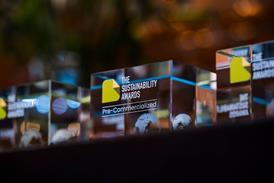
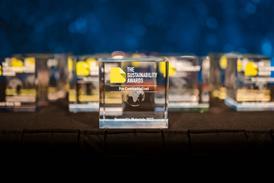
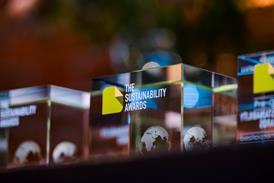
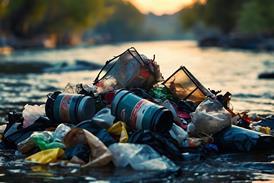
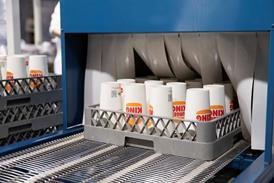












No comments yet